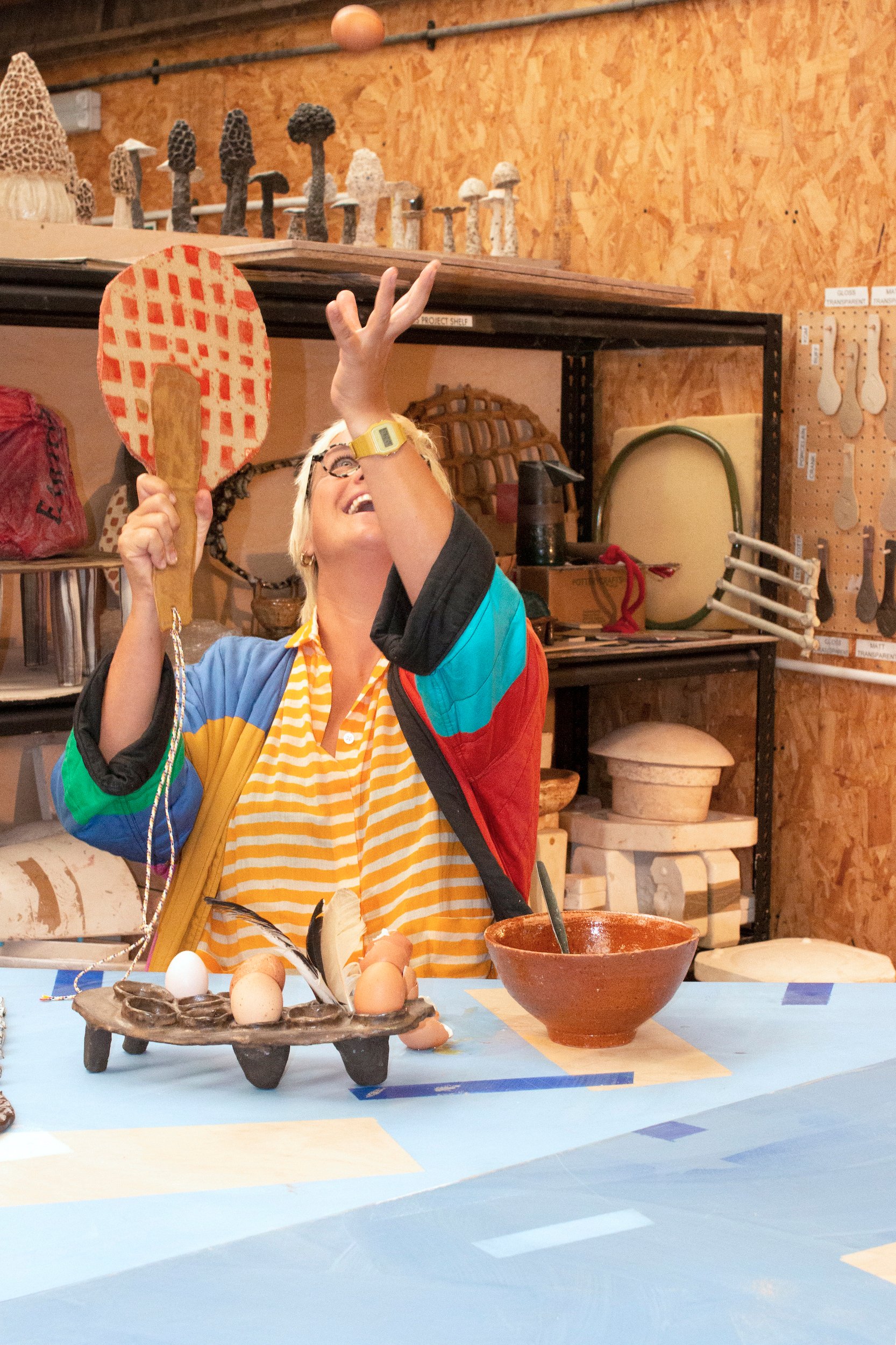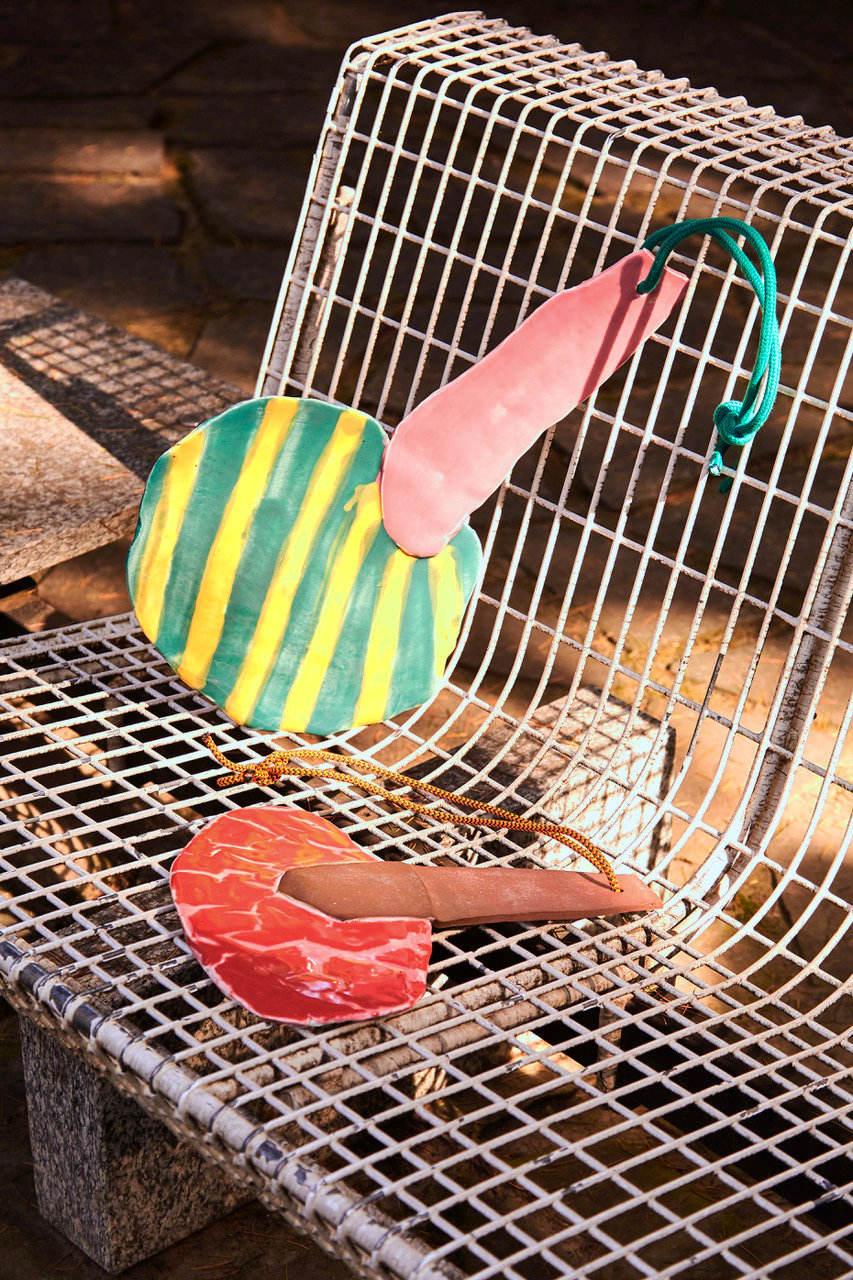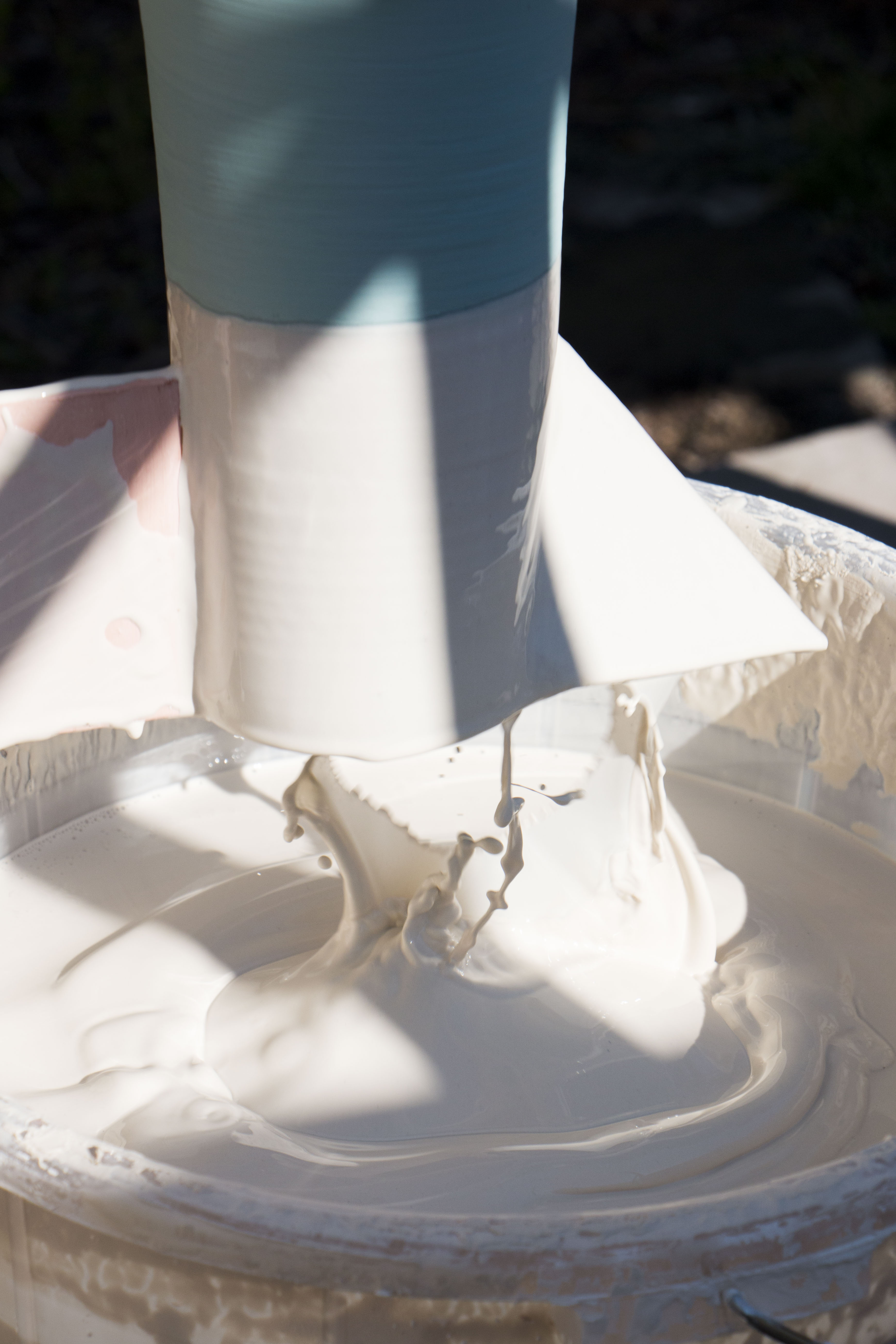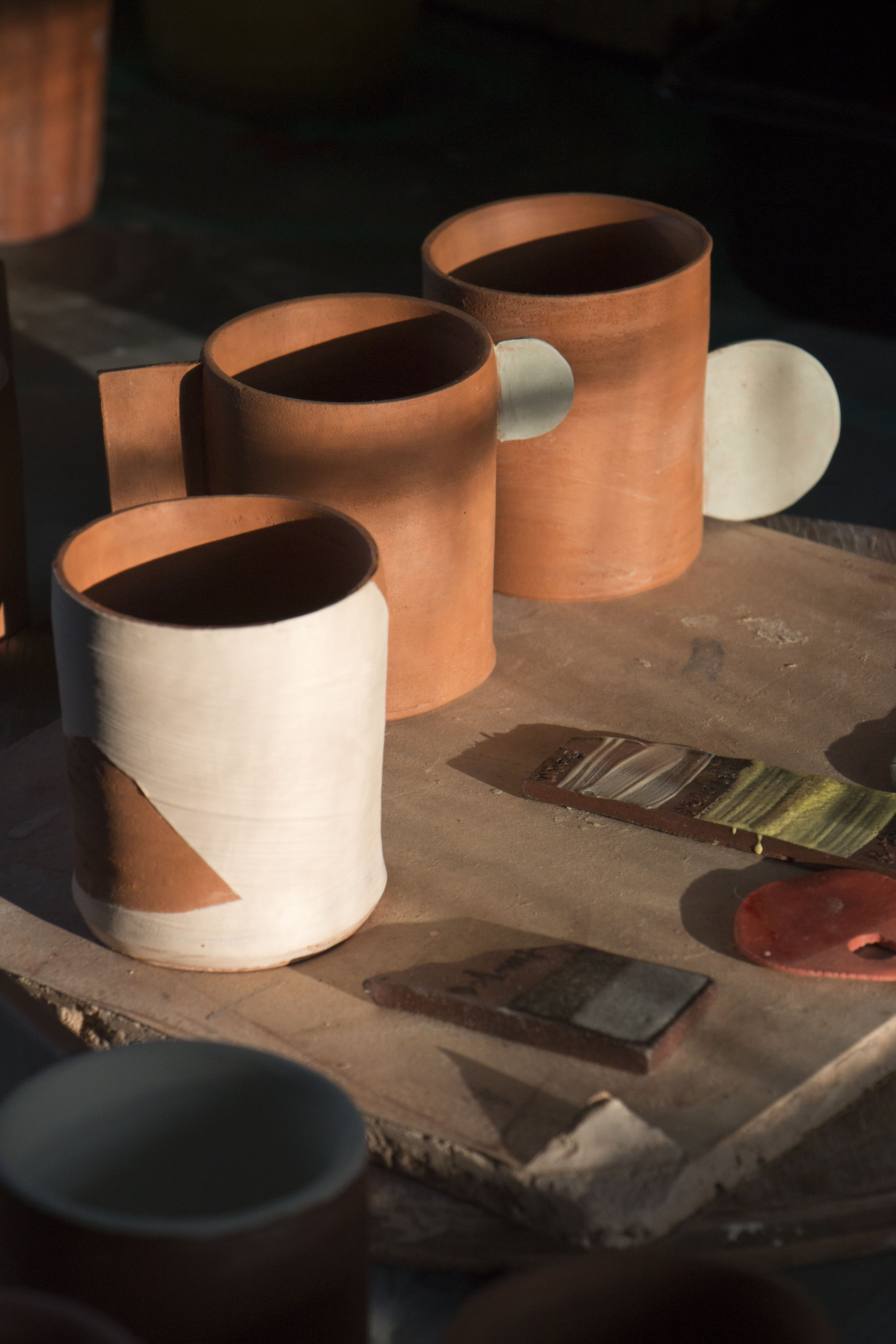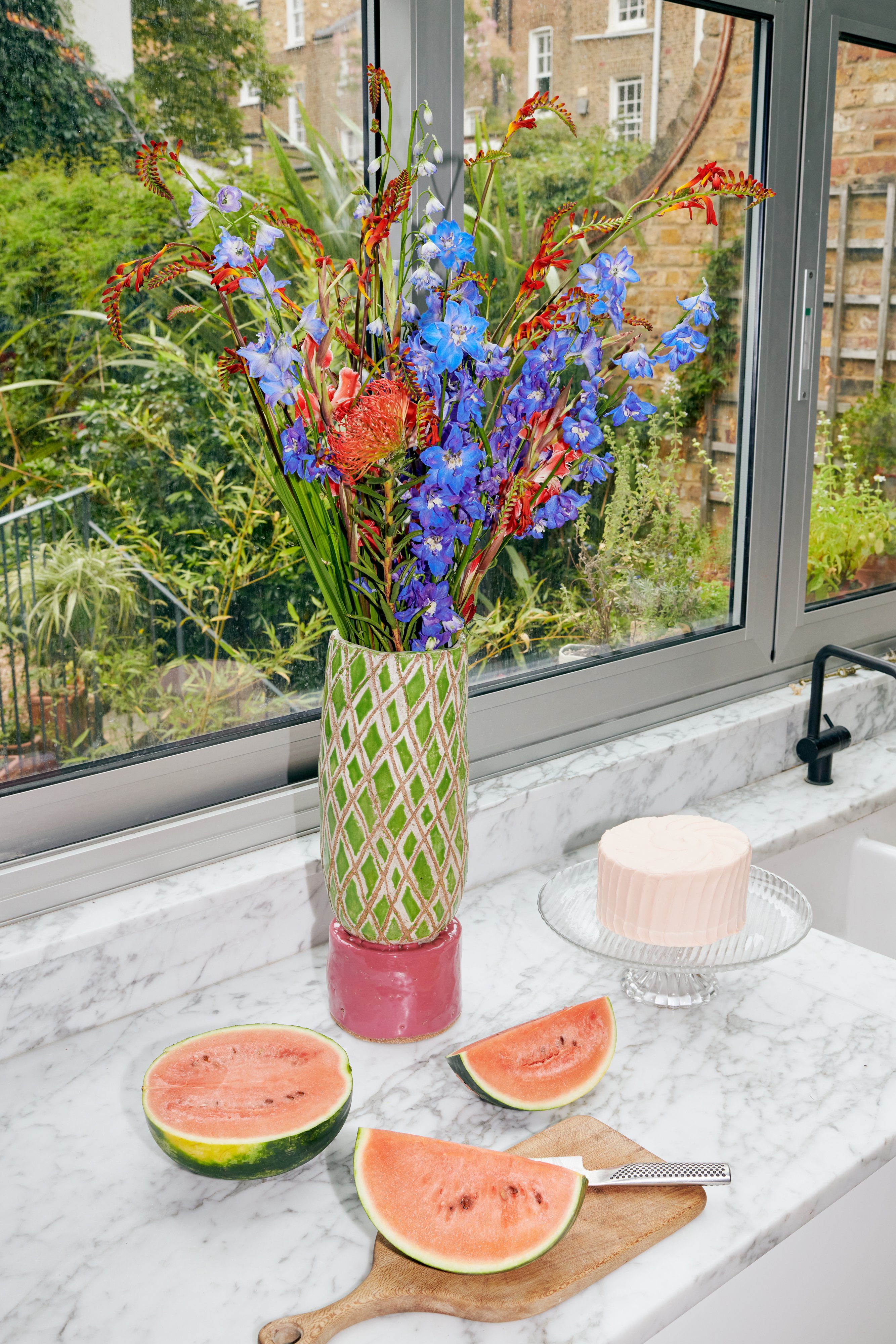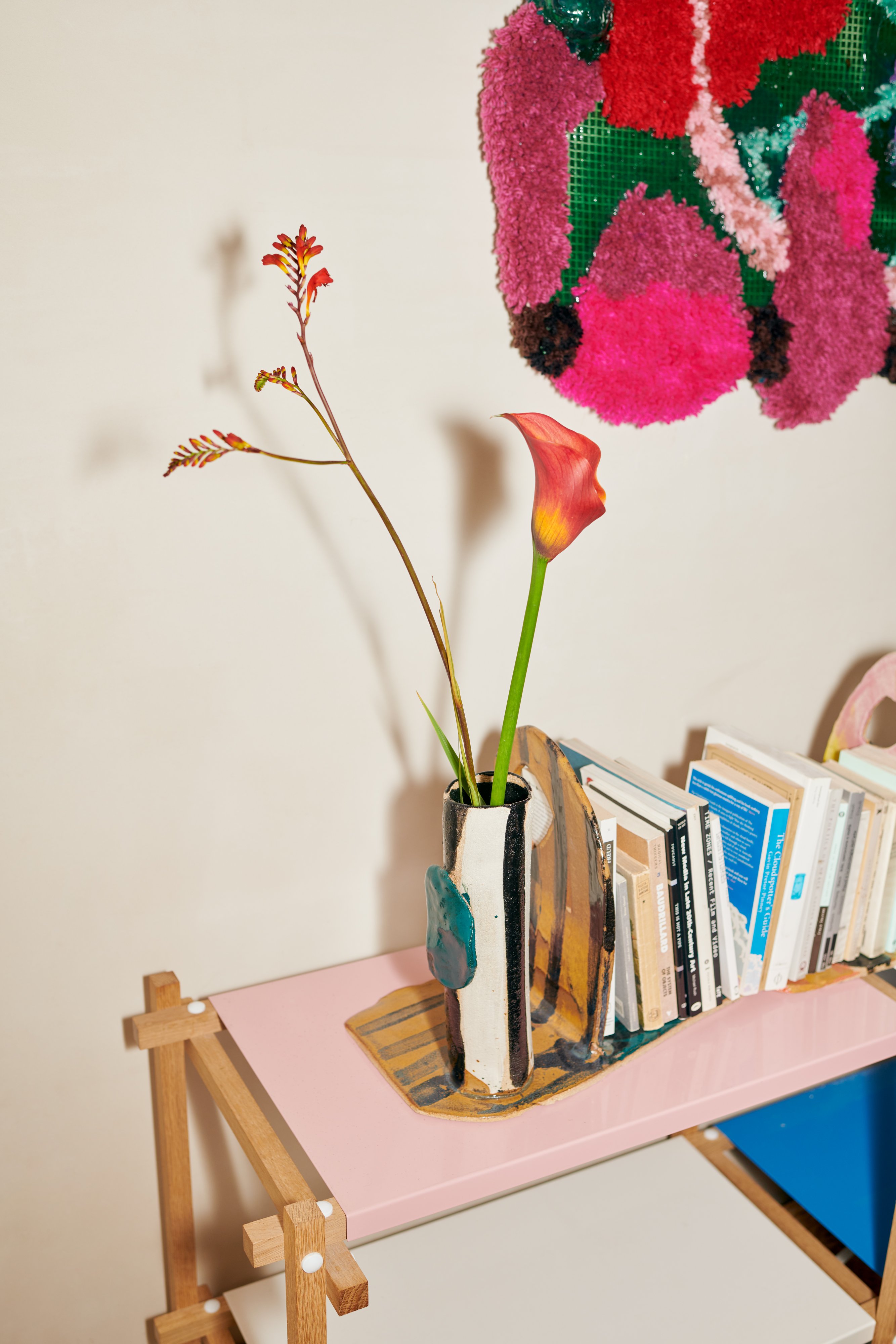Francesca Anfossi
Can you describe your work in three words?
Social, fun, in progress.
What got you into the arts? How did you become an artist?
Family, I guess. I grew up surrounded by culture and art. That’s all I ever knew and wanted to do. In 1999, I moved from Italy to London to study art and completed an MA in Painting at the Slade School of Art. I was very lucky to have Bruce McLean as a tutor there. He always told me that if I made works that looked too much like art, then it wasn’t good art. That stuck with me. For me, being an artist is always ‘work in progress’.
When did you start working with ceramic? What interests you most about the medium?
My very first encounter with the medium dates back to my childhood. I remember watching my mother and aunt making objects in ceramic and it fascinated me. When I moved to London, it wasn’t very fashionable to work with clay but I’ve always been drawn to the medium. I really got into it after having my first child in 2011. I was looking for a new studio and wanted to practice art in a more social environment, so I undertook a ceramic course at the Working Men’s College in Camden. What I love most about this material is the lack of hierarchy: clay is used by artists, designers and potters alike. It doesn’t require many skills at first and allows for a lot of freedom, because it’s a very malleable material. I also enjoy the social aspect of it. Ceramic facilities are usually quite expensive, which means that studios are often shared with other makers. It’s a very communal, social medium, probably more than other fine art practices like painting or sculpture, which can be quite lonely.
What are the things that inspire you most when creating?
I’m fascinated by tools in general, especially utensils and ceremonial objects used by tribes. I travel a lot and always enjoy discovering new types of tools. It’s incredible the amount of objects that human beings can create and how different they look from one culture to another. I’m also very interested in children’s toys, and the way we learn how to use and manipulate objects from a young age.
In 2016, you founded Rochester Square, now one of the leading ceramic centres in London. Can you tell us more about the idea behind it?
After I completed my ceramic course, I found myself quite limited in terms of space and facilities and was looking for a new studio. My practice sits at the crossroad of art, design and pottery, which is unusual within the ceramic world. At the time, I wanted more independence to keep experimenting whilst still being part of a wider community. Living in Camden, I always knew of Rochester Square but it took me years before getting in touch with the land owner. When the opportunity to acquire it arose, I realised that it was the perfect set up for a ceramic studio. I got the local community involved and from there, it just grew organically. We initiated a membership programme quite early on for the artists and ceramists who were interested in using the space. We’ve also worked very hard on the garden and started a gardening club every Friday, which is open to volunteers. Since we officially opened to the public in June 2017, we’ve organised ceramic courses, cooking classes, communal dinners, children’s workshops and artist’s residencies.
What do you hope Rochester Square will become in the future?
I think it’s already become what I wanted it to be: a place to practice ceramic that is open to all, with a strong focus on social and educational initiatives. We’re moving forward with the garden too and we now have seven chicken residents that we acquired last year. They’re great company and produce eggs on a daily basis! I just hope we could get rid of the water leaks, the unstable structure that constantly needs looking after and all the other problems related to the building itself. Hopefully, we’ll be able to build a more sustainable structure in the near future, but I hope the convivial spirit of Rochester Square will remain the same. People get quite addicted to the place, it’s amazing to see them coming back and bringing their families and friends along.
Your practice has a social dimension. What kind of message do you hope to convey through the objects you create?
More awareness towards how accessible art making can be and that art isn’t just about one final piece, but also about collaborations. A lot of my work is about making things together, this process is as important as the works I create.
What interested you about joining Canopy Collections?
When I was approached by Canopy Collections in May 2020, I felt it was the perfect time to embrace the digital realm. I love the idea of displaying art in a domestic environment, which by nature feels more accessible than the traditional white cube space. It’s a different way to get artists together and create a dialogue between their works. I think it’s important to see that art can exist within our homes and be experienced on a daily basis.
Do you collect art from other artists? How important is it for you to live with art?
I started to collect art when I was a student, without even knowing it. We used to exchange works with my fellow artists and just kept doing so long after graduating. I find it hard to resist owning an artwork when I really like it. For me, living surrounded by art is inevitable, it’s almost part of the creative process. It’s about wanting to feel inspired, everyday.
Any projects in the pipeline?
I recently won the Whitegold International Ceramics Prize 2020. In June next year, I’ll be working with them on a ceramic festival in Cornwall, in collaboration with the local community. I’m also working on a book about Rochester Square, entitled From the Pot to the Earth, which will be released soon. And I was just invited to record a podcast with curators Jenn Ellis and Cliff Lauson, as part of their Between Two Curators series. I haven’t dared to listen to it yet, can you let me know if it’s interesting?
Click HERE to listen to Francesca Anfossi’s interview with curators Jenn Ellis and Cliff Lauson.
